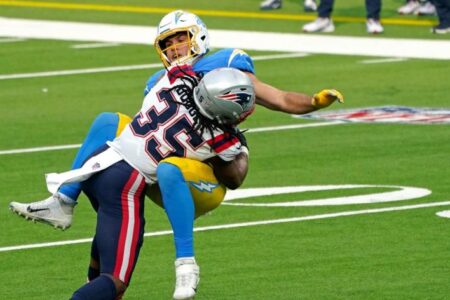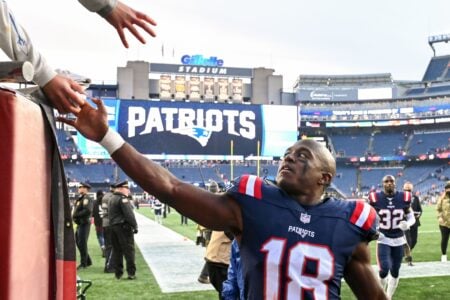PonyExpress
In the Starting Line-Up
- Joined
- Feb 12, 2006
- Messages
- 4,659
- Reaction score
- 78
Registered Members experience this forum ad and noise-free.
CLICK HERE to Register for a free account and login for a smoother ad-free experience. It's easy, and only takes a few moments.PonyExpress said:I'm considering ordering it, and wondering if anyone out there read his 2005 version and can give a review. Thanks...
Bad decisions - worst things a QB can do
I think this is probably the most important metric when it comes to a team's wins and losses. Bad decisions are simply decisions that a QB makes, usually with the ball, which he shouldn't. They can range from throwing into coverage to throwing the ball while being sacked to staring at receivers. Each time a QB makes a mistake like this, I track it in the bad decision column. In addition to tracking the number of bad passes, I also track the severity of the play on a 1-5 scale, with 1 being the least damaging and 5 being positively suicidal. Bad decisions are tracked by their severity under the metrics, bd1, bd2, bd3, bd4, & bd5.
The level 1 bad decisions are obviously the most common, and the level 5 decisions are saved for those plays that are so bad they defy explanation. If you watched the New England at Miami week 15 Monday night game last season (2004), you might remember the pass Tom Brady threw late in that game. Brady was being sacked, and his body was halfway turned around and near the ground when he just chucked up a pass that was intercepted. That's a prime example of a level 5 bad decision. Brady, who makes bad decisions very infrequently (he was #4 in total bad decision percentage) had no possible reason to throw this pass except to avoid the sack, and in that case he should've taken the sack. Then play came when the Patriots were trying to run the clock out, and gave the Dolphins the chance to come back and win, which they did. All of those factors were taken into account in rating the play a level 5 bad decision.
In addition to measuring the number of each type of bad decision, you'll also find an aggregate metric for the total number of bad decisions. I express this as a percentage of the passes at each depth, and the metric for this is bd%. This metric shows the total number of bad passes made by a QB without taking into account their severity. You'll also find a weighted bad decision total under the metric wtd bd%. The weighted bad decision metric simply adds up the number of bad decisions as weighted by their level (i.e. a level 5 bad decision is worth 5 points, a level 4 bad decision is worth 4 points, etc). I measured the weighted bad decisions as a percentage so that it would give some kind of perspective on how damaging those decisions were.
You'll hear me rail on and on about bad decisions by quarterbacks throughout this book. I can't emphasize enough how much credence coaches give to bad decisions. If a QB makes bad decisions he will almost always be benched regardless of the team's record (see Arizona's team comment among others). I also track this metric for team defense. The column metrics for team defense are identical to the QB metrics.
Lito Sheppard (CB, Eagles)
Lito Sheppard's main stats (2004): 1. Tied for 62nd in completion percentage. 2. 78th in yards allowed. 3. Tied for 63rd in yards per attempt. 4. 80th in deep yards allowed. 5. Tied for 53rd in TDs allowed. Do any of these stats say Pro Bowl player to you?
Lito isn't a terrible CB; he did some things well. He did rank 20th in tight/good coverage percentage. Beyond that, there really isn't a whole lot else. His completion percentages at every level (short, medium, and deep) were 50th or lower, he had the 2nd most deep passes thrown at him, and he was frankly targeted like crazy. Cleveland threw at him all day long, Minnesota went after him almost to the exclusion of anyone else, and Deion Branch won the Super Bowl MVP despite having Lito covering him most of the time.
The reason I'm so upset about this is because of the reasons Sheppard made the Pro Bowl, of which I can count three. First, Sheppard made something of himself at a major college (Florida), so he was already a known commodity when he came into the league. Second, he makes interceptions. Third, he has an easily remembered name (especially once you've heard Chris Berman sing "Lido Shuffle" after one of his interceptions).
He's a name player from his college days, plays on a good team, and makes interceptions, so he gets to the Pro Bowl while his more deserving teammate (Sheldon Brown) stays home. Sure Sheppard makes interceptions, but he is also beaten on passes too damn frequently. I hope he enjoyed his stay in Honolulu, because his reputation will not survive if he keeps performing like he did last year (2004).
Does his metrics change from year to year??? Does he look at different things one year as opposed to past years??gomezcat said:Anything which allows us to look at the game in a new way, one which challenges us, is a good thing. I like the idea of looking at CBs as he does, in particular. I remember reading about this guy's book on SI.com (I think it was Dr Z, but I'm not sure) and the reviewer was pretty impressed.
Pats726 said:Does his metrics change from year to year??? Does he look at different things one year as opposed to past years??
Johnny Z said:I don't know how long he has been doing it, but I think the 2005 book (2004 season) is the oldest one he has for sale.
I think he's likely to add a lot of new things in the 2006 edition.
Some of what he is doing is for the fantasy market, which ain't me.
PonyExpress said:I'm considering ordering it, and wondering if anyone out there read his 2005 version and can give a review. Thanks...














